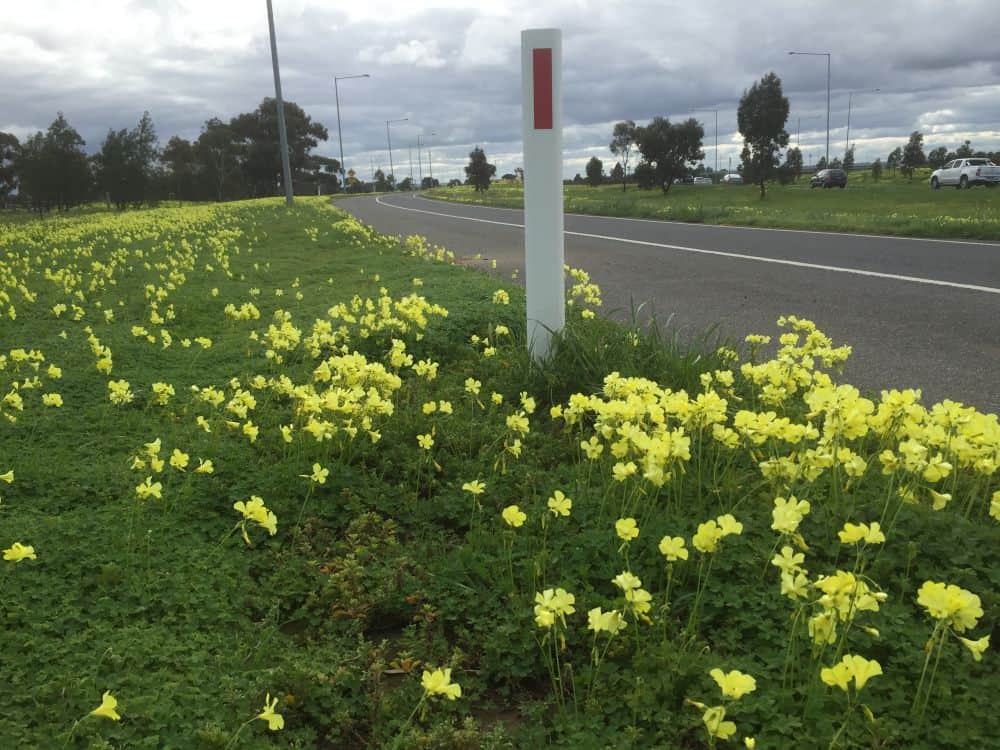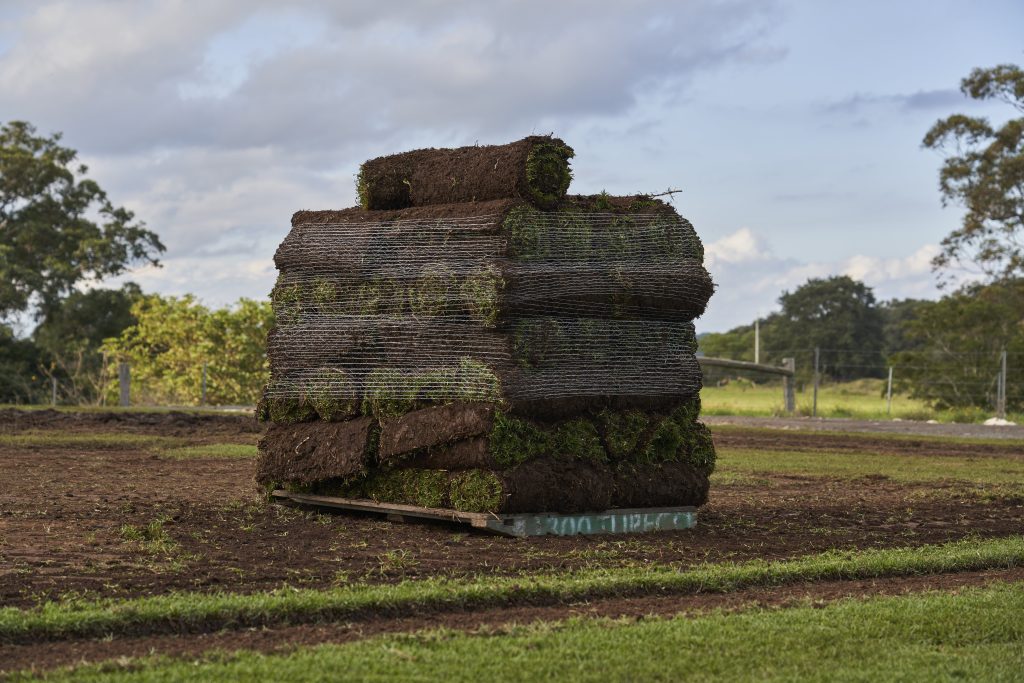What is a Soursob?
Scientific name: Oxalis pes-caprae
Soursobs are regularly confused with clover due to their very similar leaf appearance. They spread with clover-like leaves along the ground, producing flowers with 5 petals and have a long white tuberous root. You are most likely to see them in the cooler months such as in Autumn and Winter.
The problem with Soursobs is they are extremely resilient to herbicides and have a fast-growing system of onion-like bulbs growing beneath the surface. In addition to this, they have small secondary bulbs known as bulbils. These bulbils are attached to the root system and each Soursob can have as many as 20 bulbils! When you remove the plant, the bulbils are left behind then detach and grow into a new plant and the cycle continues.
One of the most important things to do is to try and target Soursob before it flowers. It is when it is flowering the bulbils are growing and creating more plants.
Flowering times:
- Winter to spring in western NSW.
- June to October in SA. (In SA 1.25 million hectares are infested!)
- June to October in WA.
- Mainly June to November in SE Australia.
- It does occur in QLD but dies out over time.
How to remove Soursobs
Completely eradicating Soursobs from your lawn will take a bit of time and effort. Unlike many other weeds, it is not recommended to remove them by hand. This is due to the bulbils breaking off and continuing to grow beneath the soil allowing it to reappear. There are also no selective herbicides readily available for domestic lawns that will target the Soursobs, so you will need to take a few other steps to try and remove it.
Mowing them off regularly will weaken the plant and helping your grass to overcome the infestation. Bulb exhaustion occurs just before flowering, so this is the perfect time to implement your mowing and non-selective herbicide application, when the plant is weak. This is the only stage physical removal will be an option, by digging up under the plant and removing the soil around it as well.
You will be able to tell the plant is at the exhaustion stage if you carefully dig up a plant – the adult bulb will be shrivelled and the root under the bulb won’t have grown yet or is extremely young and thin. Spot spraying carefully or using a weed wand with an application of Glyphosate (Round Up or Zero) will be your best course of action, but you must be careful when applying as it will kill your turf as well. Acting quickly will also help you to stop them in their tracks before they produce more bulbils.




